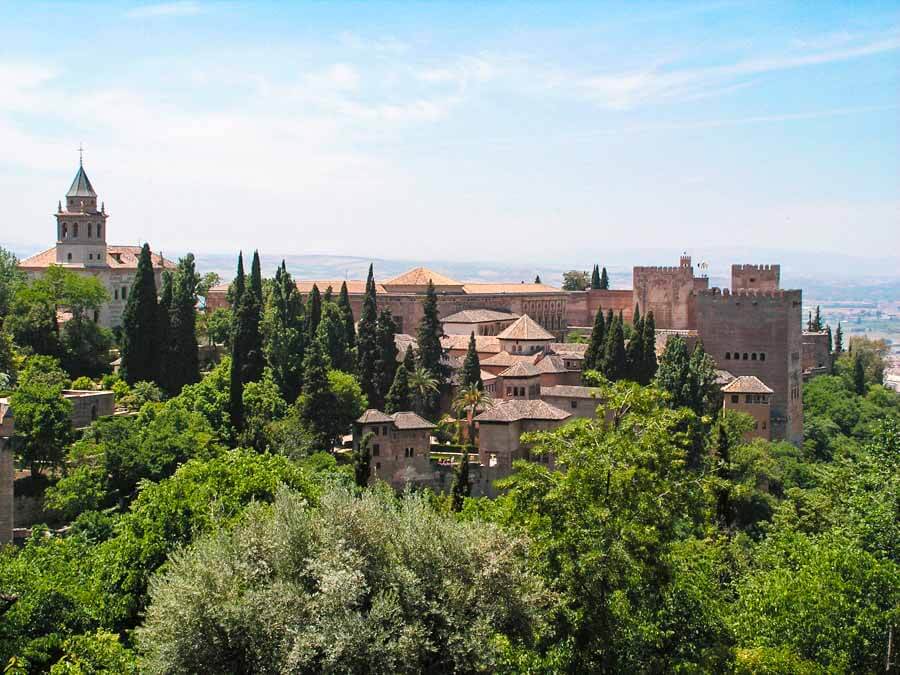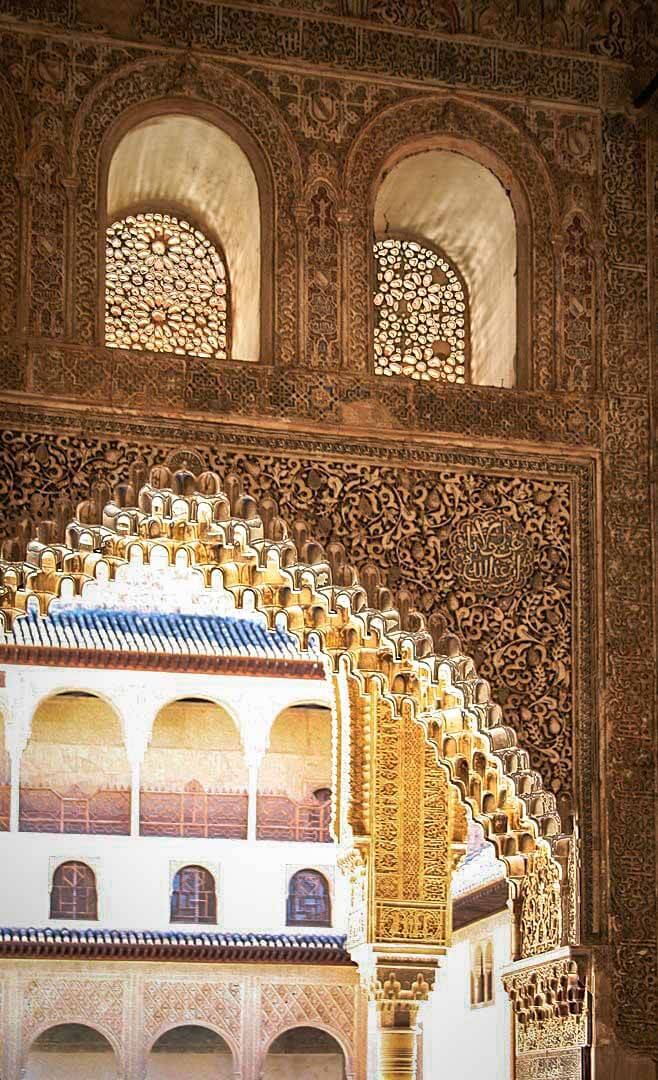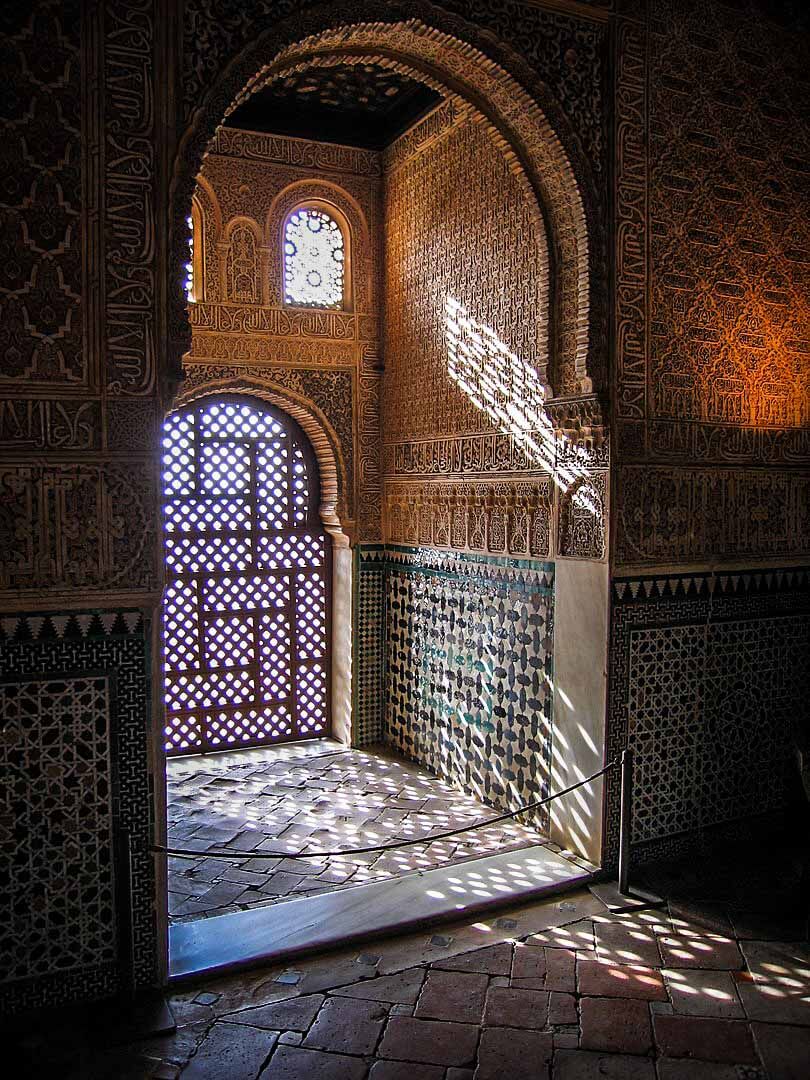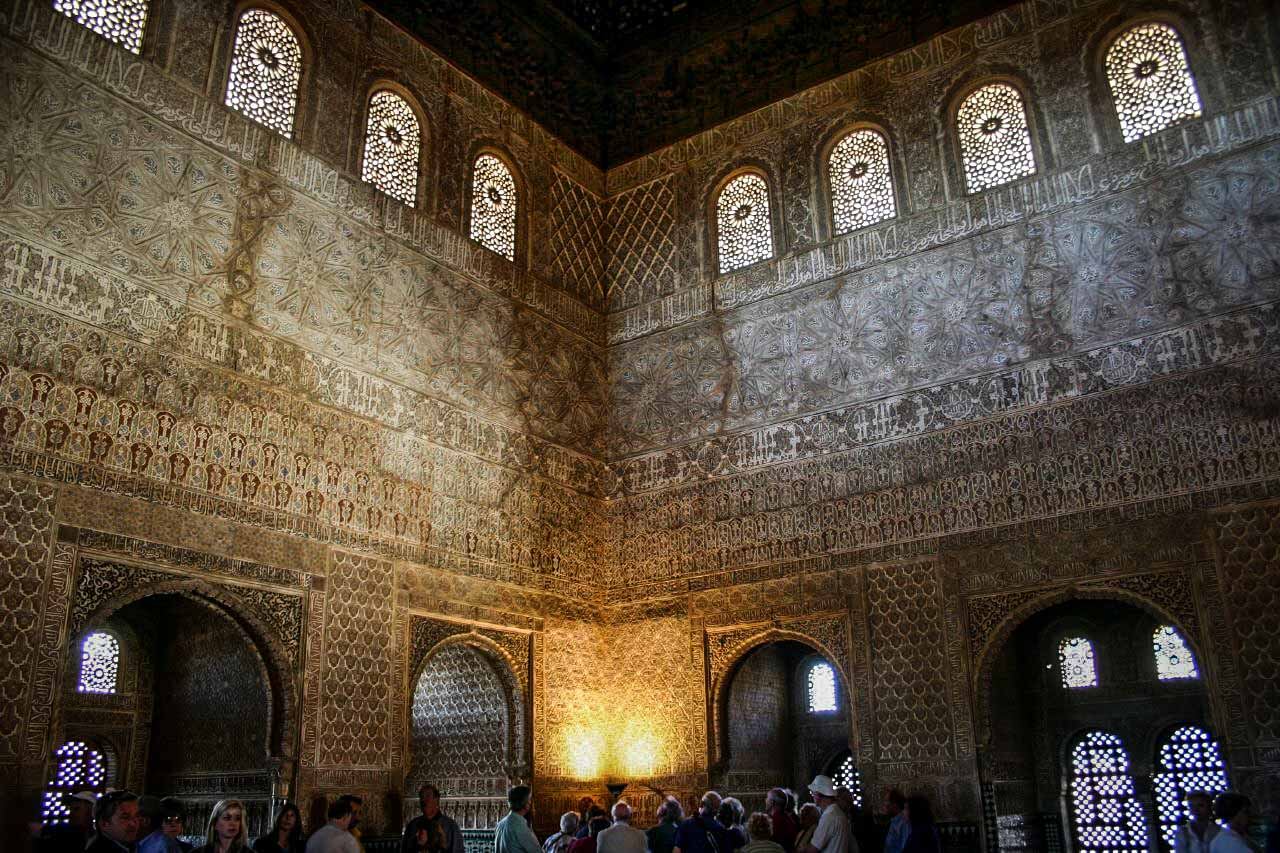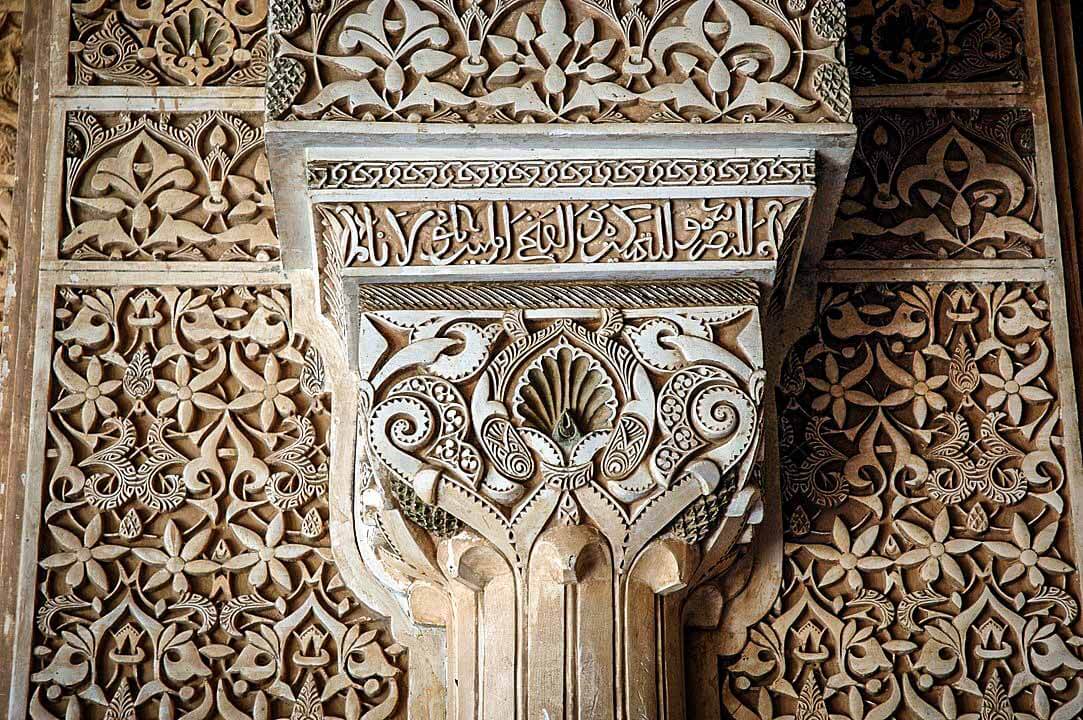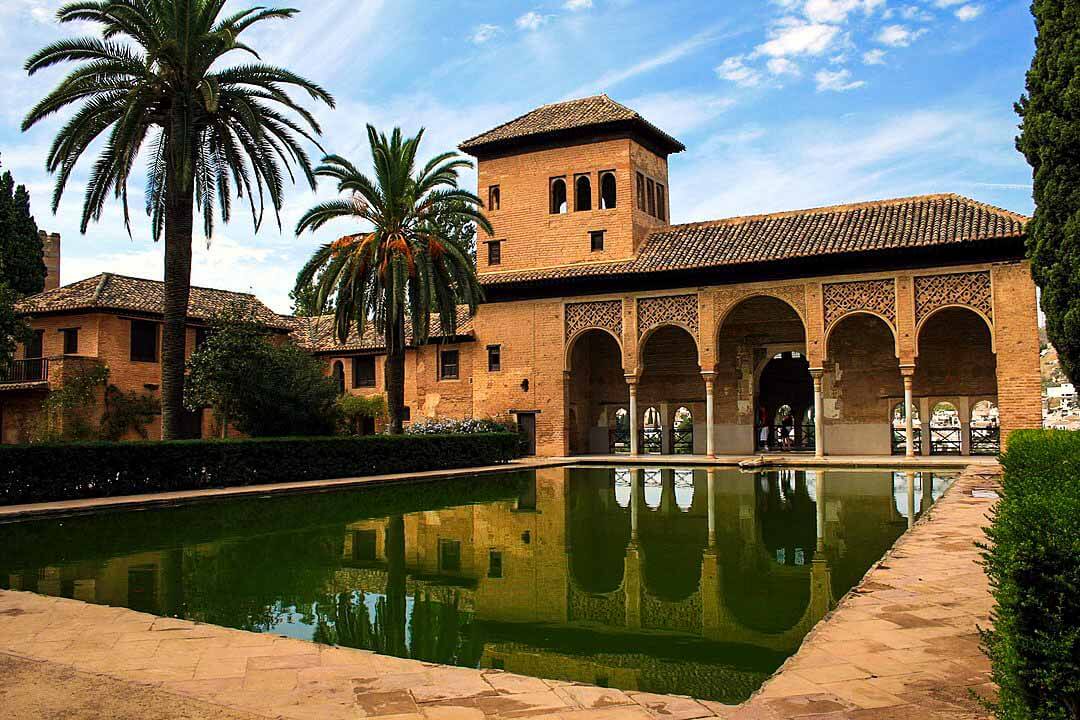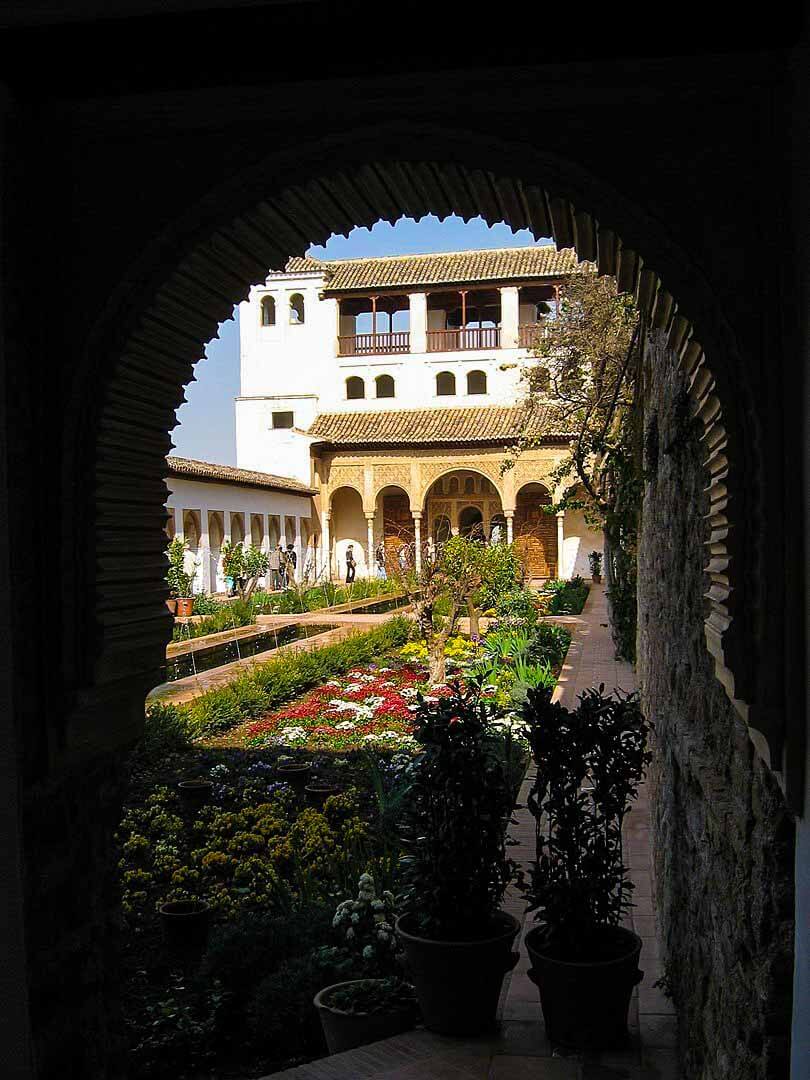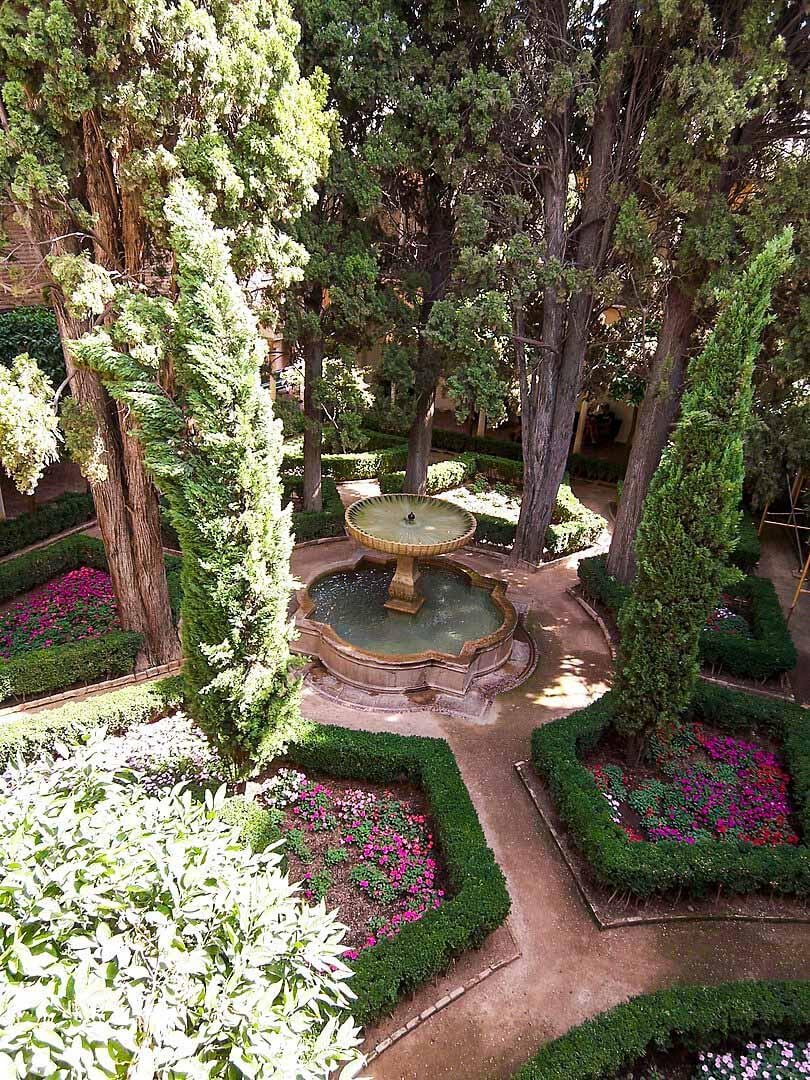Granada, Spain
Panorama
Wifes Palace
Golden Palace
Arches, Arabesk and Beautiful Arabic Inscriptions
Emperor Charles V Palace
El Partal
Gardens
Coordinates: 37.176950, -3.590010
The Alhambra is a palace and fortress complex located in Granada, Andalusia, Spain.
It is now one of Spain’s major tourist attractions, exhibiting the country’s most significant and well-known Islamic architecture, together with 16th-century and later building and garden interventions. The Alhambra is a UNESCO World Heritage Site.
It was originally constructed as a small fortress in 889 CE on the remains of Roman fortifications, and then largely ignored until its ruins were renovated and rebuilt in the mid-13th century by the Nasrid emir Mohammed ben Al-Ahmar of the Emirate of Granada commonly knows as Muhammad I of Granada, who built its current palace and walls with many beautiful, intricate details.
It was converted into a royal palace in 1333 by Yusuf I, Sultan of Granada.
After the conclusion of the Christian Reconquista in 1492, the site became the Royal Court of Ferdinand and Isabella (where Christopher Columbus received royal endorsement for his expedition), and the palaces were partially altered in the Renaissance style.
Alhambra’s last flowering of Islamic palaces was built for the final Muslim emirs in Spain during the decline of the Nasrid dynasty, who were increasingly subject to the Christian Kings of Castile.
After being allowed to fall into disrepair for centuries, the buildings occupied by squatters, Alhambra was rediscovered following the defeat of Napoleon, who had conducted retaliatory destruction of the site.
The rediscoverers were first British intellectuals and then other north European Romantic travelers.
Moorish poets described it as “a pearl set in emeralds”, an allusion to the colour of its buildings and the woods around them.
Design
1,730 meters (1 mile) of walls and thirty towers of varying size enclose this city within a city. Access was restricted to four main gates. The Alhambra’s nearly 26 acres include structures with three distinct purposes, a residence for the ruler and close family, the citadel, Alcazaba—barracks for the elite guard who were responsible for the safety of the complex, and an area called medina (or city), near the Puerta del Vino (Wine Gate), where court officials lived and worked.
The palace complex was designed with the mountainous site in mind and many forms of technology were considered. The park (Alameda de la Alhambra), which is overgrown with wildflowers and grass in the spring, was planted by the Muslims with roses, oranges, and myrtles; its most characteristic feature, however, is the dense wood of English elms brought by the Duke of Wellington in 1812.
The palace complex is designed in the Nasrid style, the last blooming of Islamic Art in the Iberian Peninsula, that had a great influence on the Maghreb to the present day, and on contemporary Mudejar Art, which is characteristic of western elements reinterpreted into Islamic forms and widely popular during the Reconquista in Spain.
Emperor Charles V Palace
The Palace of Charles V is a Renaissance building in Granada, southern Spain, located on the top of the hill of the Assabica, inside the Nasrid fortification of the Alhambra. The building has never been a home to a monarch and stood roofless until 1957
The structure was commanded by Charles V, Holy Roman Emperor, who wished to establish his residence close to the Alhambra palaces
El Partal
The most scenic exterior location Alhambra, and many people miss it being too busy running for the fortress and ignoring the gardens. it’s A Garden with little Buildings, mousqe and fountain, water everywhere.
The reflecting pool in the Partal Palace with the spectacular mirrored image of the Tower of Comares, creates a look of a floating palace which served to impress political visitors.
A passage in the Koran that reads “gardens, underneath which running waters flow…” gives more meaning to the importance of water for Muslims.



